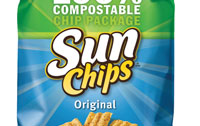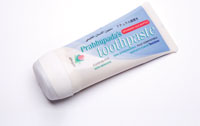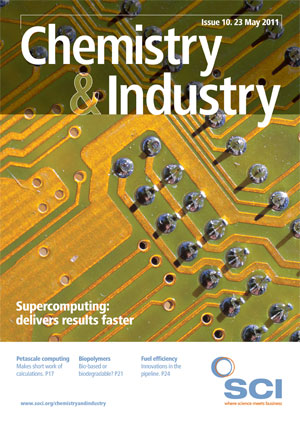Biopolymers were up in the air at a US conference in late 2010 – literally, because the venue in Denver, Colorado, is exactly one mile above sea level, but also, and more importantly, because of the confusion as to what exactly constitutes a biopolymer. Is it a biopolymer because it is biobased or because it is biodegradable? And if it is biodegradable, what exactly does that mean?
In terms of definitions, Edwin Tam, manager, strategic initiatives, in Teknor Apex’s bioplastics division, said that a bio-based polymer must contain a fraction of its carbon content that is new carbon made up of biological materials or agricultural resources. Bio-based content is measured by following the procedures set out in the ASTM D-6866 Biobased Carbon Content standard; however, he added that this would cost in the order of $1000/test.
Speaking in a workshop prior to the 5th Biopolymers Summit, Tam noted that for biodegradable plastics, there are two subdefinitions, differentiated by a time element. Plastics that undergo biodegradation resulting from the action of naturally occurring microorganisms, such as bacteria, fungi and algae, must meet the accepted industry standards, including ASTM D-6400 Compostability of Plastics, ASTM D-6868 Compostability of Plastics Coating on Renewable Substrates, ASTM D-7081 Marine Biodegradability or EN 13432 Requirements for packaging recoverable through composting and biodegradation.
Compostable plastics, however, must undergo biological degradation to yield CO2, water, inorganic compounds and biomass at a rate consistent with other known compostable materials and leave no visually distinguishable or toxic residues.
The relevant standard here is ASTM D-6400, which covers bioplastics to be composted in municipal and industrial aerobic composting facilities. The time period over which this disintegration is to be completed is usually considered to be 180 days or six months; this compares with the 12 to 18 months usually required for domestic composting.
As an example of the application of ASTM D-6400 testing, Tam looked at thermoplastic starch, which totally disintegrates in less than one month leaving a residue that totally supports plant growth. He estimated the cost of such a test is at least $12,000/test.
By comparison, Tam said that plastic cups produced using polylactic acid will disintegrate into fragments within 45 days; however, the process is dependent on the thickness of the plastic and so parts of the cups might not meet the 180 day test requirement.
If one starts from the requirement that a biopolymer must be at least part bio-based then, despite Henry Ford using soya-based plastics in one of his cars back in 1941, biopolymers are still in their infancy, according to the majority of speakers at the Biopolymers Summit.
And the size and growth of the bioplastics market reflects this infancy, with different research companies quoting different global market sizes and growth rates, noted Tam, adding that whichever figures are used, there is still major overcapacity.
According to European BioPlastics, said Tam, global bioplastics capacity is likely to reach 2.3m t in 2012, up from 36,000t in 2007, while the Freedonia consultancy firm believes global capacity will increase six-fold to reach 890,000t over the same period. BCC Research has revised its earlier figures and now says global bioplastics capacity will reach 3.2m t by 2015, up from 570,000t in 2010; all figures that Tam believes are far too high.
In terms of consumption, Tam quoted BCC Research’s figures for different global regions, with the US growing from just over 200,000t in 2010 to over 1.4m t in 2015, while European consumption is forecast to rise from just under 200,000t in 2010 to almost 800,000t in 2015. Tam, however, believes that Europe was much more active in the biopolymer arena than North America in 2010. For Asia-Pacific, after slow growth up to 2010, when the use of bioplastics stood at around 100,000t/year, use is expected to climb to 600,000t/year by 2015.
Mike Malveda, from SRI Consulting, told delegates that the largest and fastest growing sector in the US for biodegradable polymers is solid packaging and fast food utensils, with PLA, PHA and blends of starch and PLA being the main polymers used.

Malveda confirmed that food packaging will be the major growth area for bioplastics with a 14-18% AAGR over the period 2009-14. Biopolymer foam packaging will grow by 9-10%, he said, while compost bags will increase by 7-9% over the period.
But Malveda also pointed out that biopolymers represent just a tiny portion of the US plastics market and 1-2% of the total global plastics market; and of that total market biodegradable polymers account for an even smaller amount. So it isn’t easy being green – there are plenty of challenges. And for products in the early stage of their development, their general acceptance is, and will continue to be, very much dependent upon the perception of their properties and overall characteristics.
Not only must they at least equal the performance of conventional materials that they may replace but the perception of this performance among the final customers and consumers is extremely important; something that Pepsico subsidiary Frite-Olay discovered when it launched its Sun Chips crisps in a bag produced using polylactic acid (PLA) in March 2010.
The fully compostable three-layer bag had been developed over a period of three years. Once the bag has been developed, Frite-Olay worked with Wood’s End, and independent laboratory to evaluate the bag’s performance and certify its compostability. The bag also received third party certification from the Biodegradable Products Institute.
However, while the bag performed perfectly acceptably in terms of preserving and containing the product in pristine condition and even in disposal, consumers responded very badly to the packaging claiming that when opened it was extremely crackly and too noisy.
So despite having the best of intentions in moving to packaging based on a renewable feedstock, the company suffered what one speaker, Mark Bünger, from US consultancy Lux Research, described as a major consumer ‘snacklash’.
Bünger said it was a mistake for a consumer product to go mainstream in this way, as it just sets the situation for a backlash. A better approach, he said, would be to aim initially at fringe markets to gain feedback that can be used to improve the product. He cited, as an example, Toyota’s Prius hybrid car, which has become a major success, in comparison with General Motors’ equivalent the EV1, which sank without trace despite being launched first.
Now in the case of the crisp bag, despite Canadian consumers welcoming the noisy packaging, the company withdrew the product and had to go back to the drawing board to reengineer the packaging material. But, as Carol Casarino from DuPont Biofuels pointed out, raw material suppliers are aware of the particular properties of PLA that are responsible for the problem. Indeed, DuPont itself has been looking at the problem and believes it may be on the track of a possible solution.
Casarino described DuPont’s Biomax material as being a PLA ‘toughener’ that can also act as a bioprocessing aid as well as being able to reduce PLA ‘noise’, however, testing to date had only been conducted on monolayer films. ‘Although it is not a bioresourced polymer, it can act to improve bioresourced polymers,’ she said.
After almost a year, Frite-Olay has relaunched its crisp packet with a new more rubber-like, less stiff, adhesive layer between the outer and inner layers. This has reduced the sound level from the 80-85 decibels of the original bag to around 70 decibels.
The company has decided, however, that initially the new bag will only be used on the plain variety of its crisps and consumer comments will be awaited before any decision about extending its use is made. The company has declined to reveal how much it has spent on this packaging. This experience demonstrates one of the key tenets behind the introduction of biopolymers as highlighted by Lux Research’s Bünger: gain experience through small scale developments before contemplating a major launch. It is essential to gain customer feedback, which may throw up unexpected issues that will need to be addressed before that mainstream product launch. Without listening to users, biopolymers will remain ‘up in the air’.
Bio-based packaging to lower carbon impact
Some companies have had more success with the introduction of bio-based packaging. After the introduction of Coca-Cola’s PlantBottle, the packaging concept is now being adopted by Heinz for its ketchup products through a strategic partnership. Coca- Cola first launched the PlantBottle in 2009 as the first recyclable PET bottle with up to 30% plant-based content. An initial UK life cycle analysis by Imperial College London showed that the bottle’s use provided a 12-10% reduction in carbon impact. It is estimated that during 2010, this packaging cut the equivalent of almost 30,000t of carbon dioxide or approximately 60,000 barrels of oil.


USDA awards first certified bio-based product labels
Eleven US companies were approved at the end of March 2011 and are now able to use the US Department of Agriculture’s (USDA) new product label for independently certified bio-based products that meet the standards in the USDA BioPreferred programme. The companies include NatureWorks, which can use the label on products made with its Ingeo biopolymer; DuPont, for its Sorona fibre; ElastiKote, which produces roofing membranes; Nutek Green, a division of Hoover, which produces lubricants and cleaners; and Bio-Lub Canada, which is also a producer of lubricants and cleaning products. Some 60 products can now use the label, ranging from hand soaps and sanitisers, through food packaging, cleaning products, engine oils and lubricants to fibres for carpets and clothes. The label designates bio-based products that are composed wholly or significantly of agricultural ingredients including renewable plant, animal, marine or forestry products.
Through the implementation of its BioPreferred programme, which was created in the 2002 Farm Bill, the USDA has identified 5100 bio-based products for preferred purchasing by US federal agencies. The new product label should make it easier for purchasers to identify bio-based products and increase awareness of these products. The USDA estimates there are 20,000 bio-based products currently being manufactured in the US. At the launch of the labelling scheme in January 2011, deputy agriculture secretary Kathleen Merrigan said: ‘ These products have an enormous potential to create green jobs in rural communities, add value to agricultural commodities, decrease environmental impacts and reduce our independence on imported oil.'




